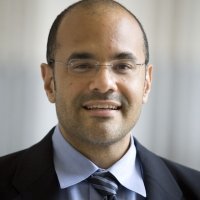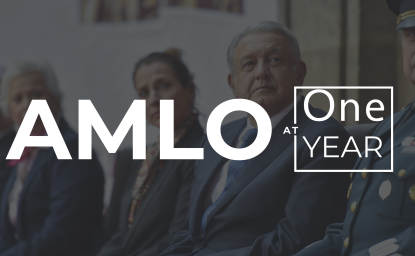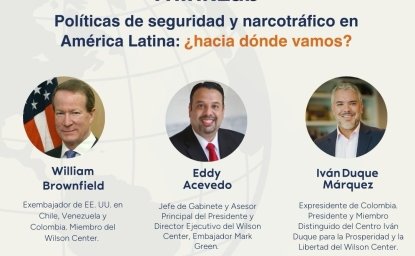As has been the case for each of his predecessors over the past two decades, violent crime has been one of the most vexing challenges facing Mexico’s new president, Andres Manuel López Obrador (a.k.a., AMLO). The course of his first year in office, Mexico’s new president has been confronted by a rising tide of homicides and high profile incidents of violence, including a backlash from cartel gunmen that led to the release of a major drug trafficker and the massacre of three women and six children of dual-nationality in November 2019.
Given this turn of events, there is growing international concern about the resurgence of violent crime in Mexico, and what can be done about it. Some observers have characterized Mexico’s security crisis as a form of domestic insurgency or even terrorism, and in the aftermath of the November 2019 massacre President Trump has called for U.S. intervention to help Mexico wage a “war” to wipe the cartels “off the face of the earth.”
Such proposals reflect the sentiments of policymakers frustrated by the persistence of rampant violence after more than a decade of bilateral cooperation to combat organized crime. The also echo past policy proposals to treat Mexico’s wave of violent crime as if it were something it is not: a politically motivated to topple the Mexican state. While a situation would clearly require a military response, Mexico’s real problem is criminal impunity. The only way to fight criminal impunity is to develop Mexico’s civilian law enforcement capabilities, and particularly increasing the capacity and integrity of police and prosecutors to prevent, investigate, and punish violent crime.
Mexico’s Security Dilemma
Mexico has spent the last decade implementing much-needed judicial procedure reforms to protect the rights of crime suspects from police and prosecutorial corruption, abuse, and due process violations. This represents important progress that will raise the bar for the entire Mexican criminal justice system, but research and practical experience shows that police and prosecutors remain woefully unprepared to take on the enormous problems of violent crime facing the country.
Indeed, after a brief lull from 2012-14, Mexico has seen a dramatic resurgence of homicides, surging to record levels each year since 2017. According to the latest available data, the country is easily on track to reach an unmatched 35,000 or more homicides by year’s end in 2019, particularly once final figures are reported by INEGI in mid-2020.
Amid the unprecedented levels of violence, there are familiar patterns. First, Mexico’s recent violence has been geographically concentrated, with over half of all homicides concentrated in just seven of Mexico’s 32 states (Guanajuato, Baja California, Mexico State, Guerrero, Jalisco, Chihuahua, and Michoacán) in 2018. That same year, five municipalities accounted for over a quarter of all homicides (Tijuana, Ciudad Juárez, Acapulco, Cancún and Culicán). Second, this concentration of homicides in key drug-trafficking production and transit points belies the fact that conflicts among major organized crime groups remain the most important driver of violence in Mexico. This is due to the fact that, among drug trafficking organizations, there has been increased competition, splintering, and a need to use violence to resolve disputes.
The violent fractionalization of organized crime has been the intended result of heavily militarized strategies that President Felipe Calderón (2006-2012) asserted would break up Mexican cartels into “smaller, more manageable pieces.” But without effective judicial sector institutions in place to deal with the resulting regionalized splinter groups, which often engage in predatory crimes targeting innocent civilians. At the same time, any gains in disrupting major organized crime groups were short lived, as illustrated by the recent rise of the Jalisco New Generation Cartel (CJNG), which seeks to displace the once-dominant Sinaloa Cartel associated with convicted drug trafficker Joaquín “El Chapo” Guzmán.
From Illusion to Reality: López Obrador’s Security Approach
Such is the reality that has confronted President López Obrador, who came into office in December 2018 with grand promises that his approach would help to reduce violent crime. To some extent, like President Peña Nieto (2012-18) before him, it seems like López Obrador assumed that Mexico’s security crisis would somehow naturally dissipate under his own, more enlightened administration of state affairs. However, amid the rampant criminal violence that has proliferated during his first year in office, López Obrador’s vision of transforming Mexico’s public security crisis seems increasingly like an illusion.
On the campaign trail, in direct criticism of the militarized strategies employed by his predecessors, López Obrador promised a new, more benevolent approach that would invoke “hugs, not gunfights” (“abrazos, no balazos”). Notably, he pledged to abandon the “kingpin strategy” of targeting top organized crime figures, which many experts agree has contributed to splintering, infighting, and violence among Mexico’s major organized crime groups. Yet, in its place, the administration appears to have no alternate strategy that articulates a set of tactics and sequential steps leading to a clearly defined objective.
Still, like many of his predecessors, López Obrador has overseen some important changes. First, emphasizing the need to reduce the socioeconomic pressures that drive young people into a life of drugs and crime, López Obrador has created a series of youth education and employment programs for the roughly 2.6 million Mexican youth aged 18-29 that are neither employed nor matriculated in school AMLO’s Secretary of Work and Social Policy (STPS) will coordinate with the Secretariat of Public Education (SEP) to distribute a total of 300,000 scholarships to students, and job training stipends for up to 2.3 million youth to connect to employers in the private, public, and NGO sectors.
However, providing education and employment opportunities is at best long term venture and only a first step toward addressing many other social ills —substance abuse, marital problems, domestic violence, societal discrimination, etc.— that frequently lead to the dislocation of young people who turn to deviant subgroups and find alternative social support systems in criminal gangs. For this, the López Obrador administration will need to consider instituting a program similar to the Program for Attention to Young People at Risk (Programa de Atención a Jóvenes en Situación de Riesgo) that he instituted as head of the Mexico City government in 2002.
In the meantime, to address Mexico’s immediate security needs, the López Obrador administration has overseen three major initiatives to restructure federal law enforcement agencies. First, López Obrador resurrected a cabinet level secretariat for Public Security and Citizen Protection (Secretaría de Seguridad Pública y Protección Ciudadana, SSPPC), tasked with the challenging task of coordinating Mexico’s various civilian and military security operations. Second, López Obrador has created a new National Guard, casting aside a decade-long effort to develop a federal level police agency with investigative capacity (the Federal Police). The National Guard appears likely to be used mainly for order maintenance, including recent deployments to the southern border to thwart Central American migrants, and lacks the training and orientation of a civilian law enforcement agency. Third, López Obrador also appointed the head of the autonomous General Prosecutor’s Office (Fiscalía General de la República, FGR) that was created five years prior to replace the Attorney General’s Office (Procuraduría General de la República, PGR) and allow greater prosecutorial independence from the executive branch. Ostensibly, the new attorney general’s nine-year term will help to ensure some degree of autonomous oversight over the executive branch, at least beginning with López Obrador’s eventual successor in 2024.
Still, recent incidents in 2019 suggest that the López Obrador government’s security efforts are thus far inadequate. Notably, in October 2019, there were a series of shootouts between organized crime groups and Mexican security forces in the states of Sinaloa, Michoacán, and Guerrero. The first incident was a cartel ambush that killed 13 police officers on October 14 in Aguililla, Michoacán, the cradle of Mexican drug trafficking and hometown of CJNG leader Ruben “Nemesio” Oseguera Cervantes. The next day, 14 civilians and one Mexican military soldier were killed in the town of Tepochica in the municipality of Iguala, Michoacán, where 43 students were killed by an organized crime group at the behest of corrupt local Mexican government officials (and with federal police involvement) in 2014.
Just a few day later, López Obrador’s response to events on October 17 demonstrated that his government’s limited willingness and capacity to confront organized crime groups. After the surprise capture of Ovidio Guzmán, one of the sons of Joaquín “El Chapo” Guzmán, Sinaloa cartel gunmen took to the streets of Culiacán in protest and killed 13 people. Authorities capitulated to their demands, releasing Ovidio Guzmán to prevent further bloodshed.
Of course, arguably, this is nothing new. For decades, drug traffickers have used “silver” bribes or “lead” bullets (plata o plomo) get officials to turn a blind eye to illicit activities. What is perhaps different about López Obrador’s approach is that the federal government has openly indicated its willingness to stand down when faced with violent opposition. Many analysts worry that this will encourage other groups to openly defy and intimidate the Mexican government and sends a message to Mexican citizens that they are on their own.
Concluding Observations: Hope for the Future?
What is clear is that the recent resurgence of violence in Mexico presents a formidable challenge. Levels of violent crime currently surpass those seen in decades. While AMLO views the strategy of leadership disruption and massive military force deployments that was employed by Calderón as counter-productive, he has no clear alternative.
In the breach, violence continues unabated and there are growing apprehensions about the absence of an adequate state response to the brazen tactics of Mexican organized crime groups. Indeed, the massacre of three women and six children of dual-nationality in November 2019 represents a new low point in the drug war in Mexico. Such incidents offer no bright side and little cause for hope, but they do present an opportunity to re-assess the policy options available to the Mexican government to combat organized crime.
In this sense, there is an opening for various actors—Mexican civil society, international organizations, and the U.S. government— to engage the López Obrador administration in a constructive dialogue about the possible policy options that can help to develop a more clearly articulated security strategy. To be effective and lasting, that strategy will need to focus principally on strengthening Mexico’s law enforcement capacity and reducing criminal impunity.
Opinions expressed here are solely those of the author.
Author

Professor and Graduate Director, Department of Political Science and International Relations, University of San Diego; Director, "Justice in Mexico" Project

Mexico Institute
The Mexico Institute seeks to improve understanding, communication, and cooperation between Mexico and the United States by promoting original research, encouraging public discussion, and proposing policy options for enhancing the bilateral relationship. A binational Advisory Board, chaired by Luis Téllez and Earl Anthony Wayne, oversees the work of the Mexico Institute. Read more

Explore More
Browse Insights & Analysis
AMLO at One Year

The OSCE is a Good Value for America


